Design Thinking First Aid Kit
An interpretation of design concepts
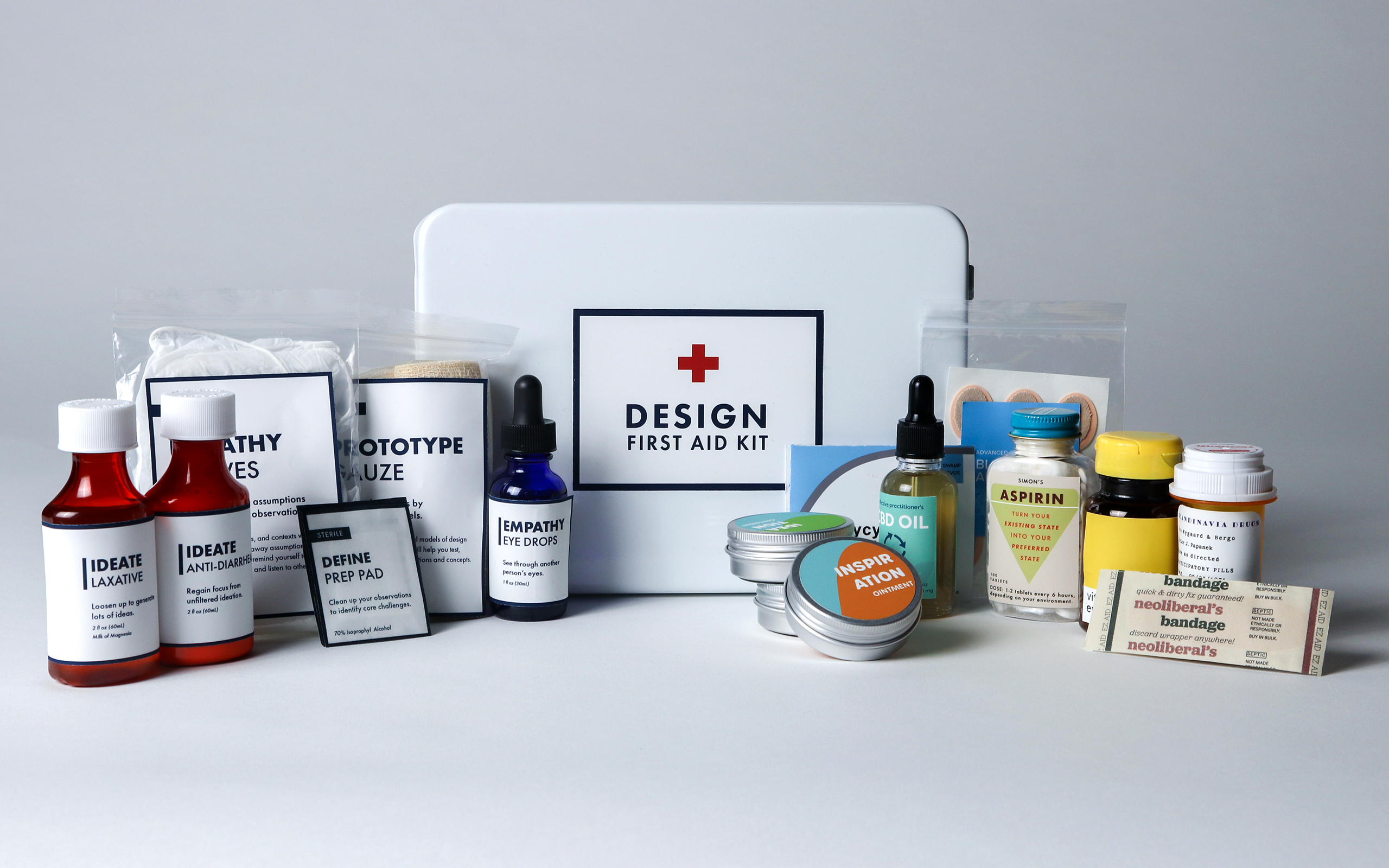
This was a 3-week solo conceptual project for CMU's Design Thinking Seminar taught by Jonathan Chapman Fall 2018. The prompt was to produce our interpretation of design thinking in physical form.
Tools used: Illustrator, Photoshop, wide format printers, laser cutter
My Interpretation of Design Thinking
Inspired by Victor Papanek’s seminal work Design for the Real World and the idea of survival through design, I designed and fabricated a design thinking first aid kit.

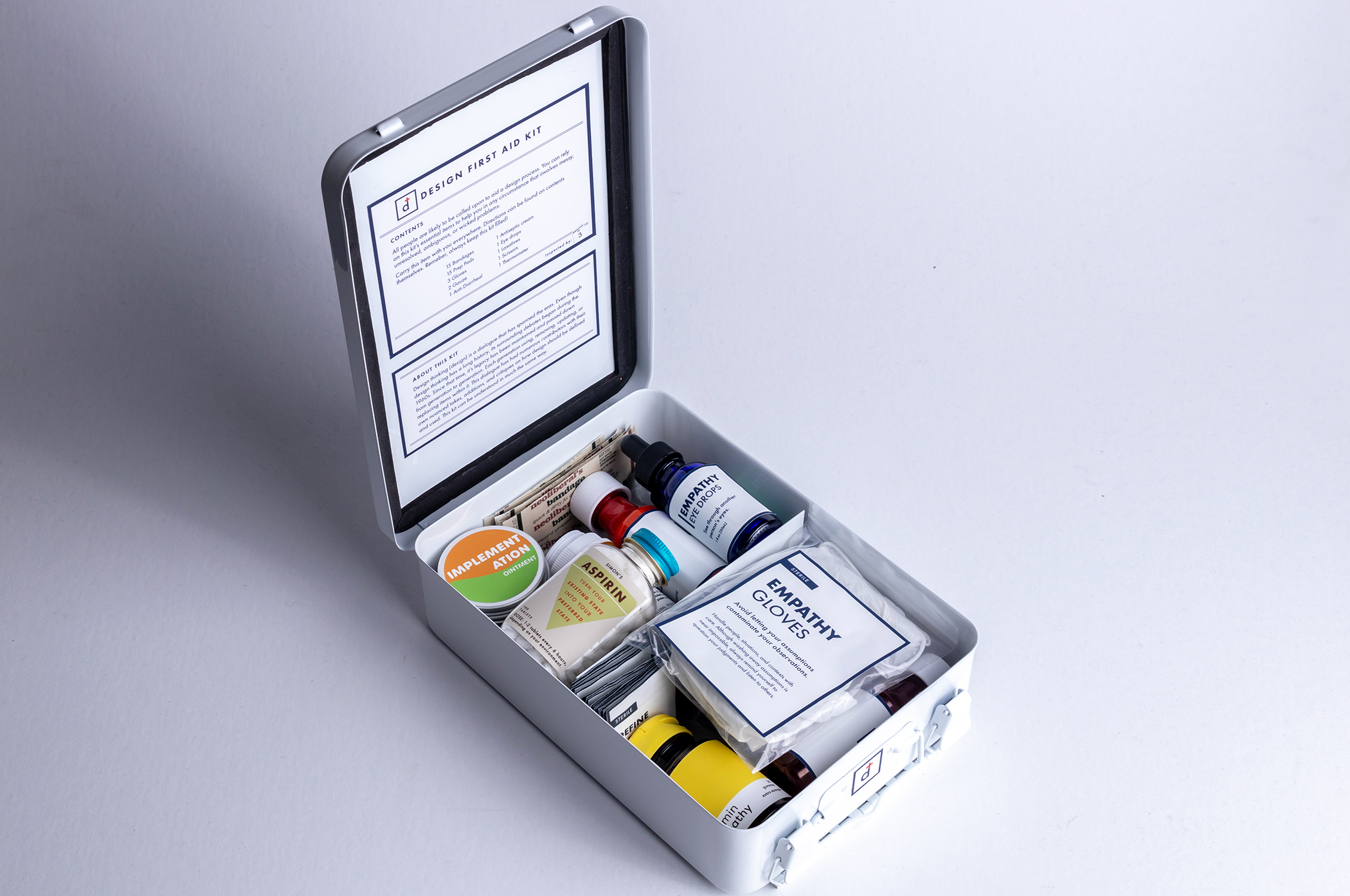
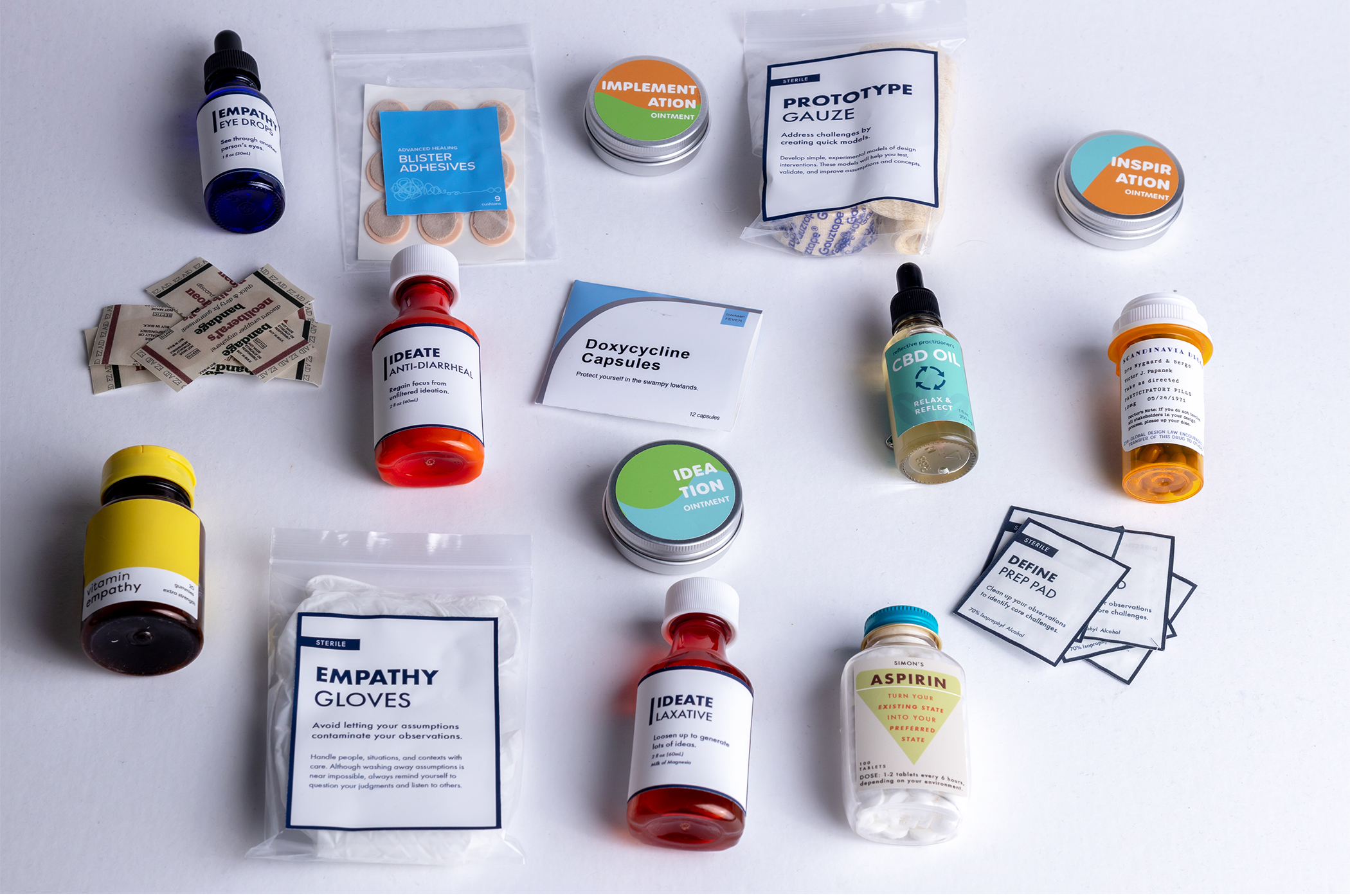
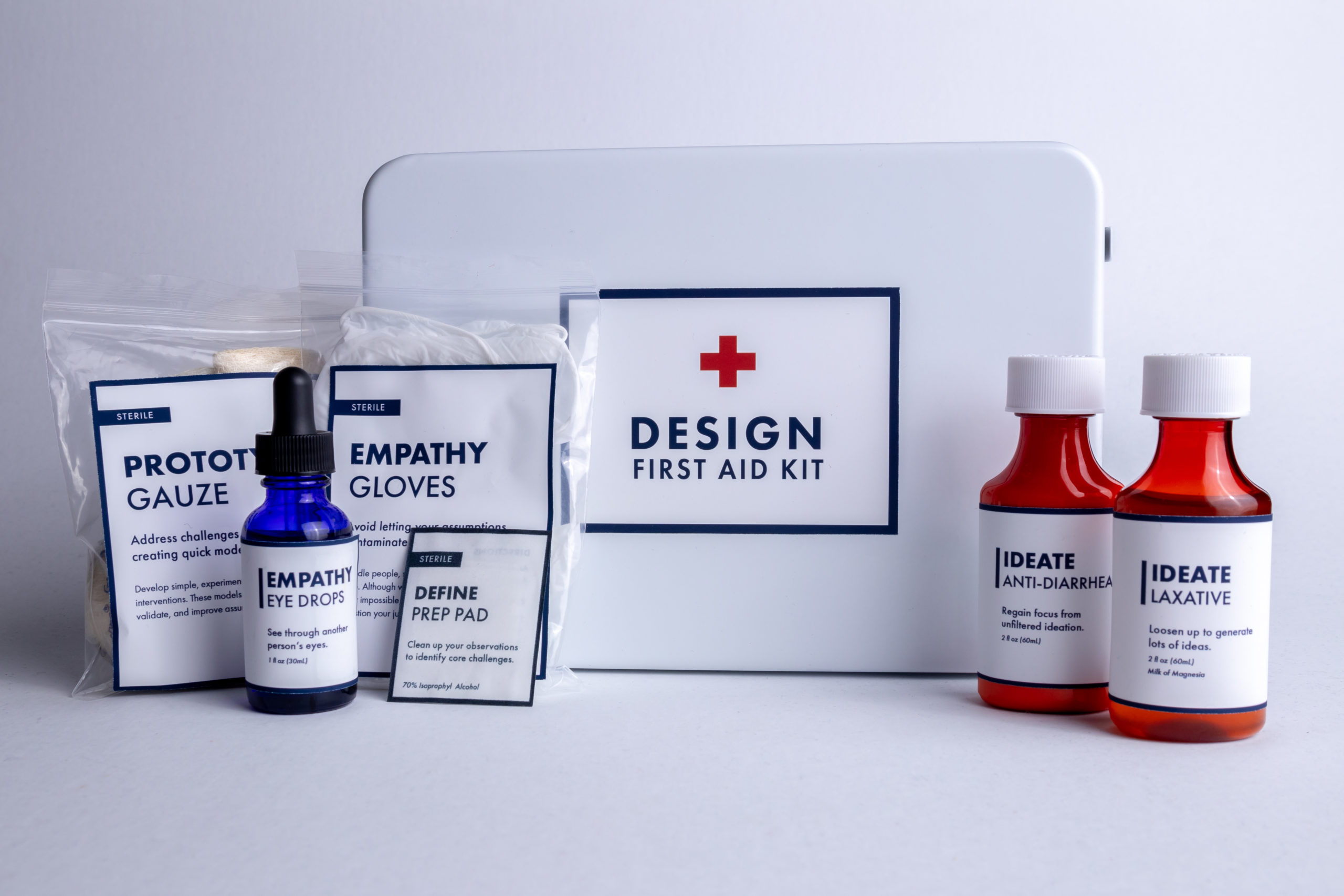
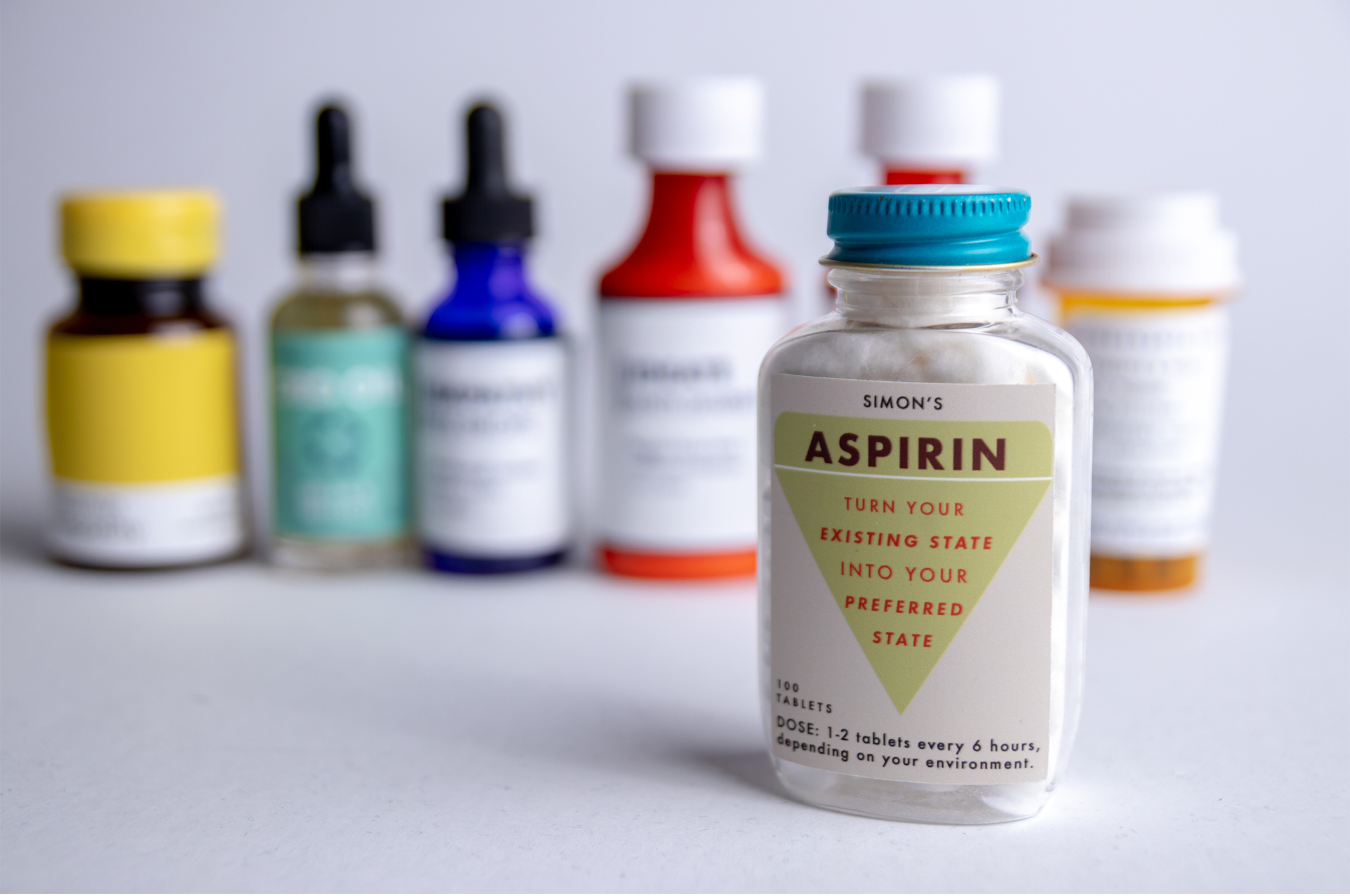
Why a First Aid Kit?
Design thinking is a dialogue that has spanned the eras. Although design thinking has a long history, its surrounding debates began in the 1960s. Since that time, it’s legacy has been maintained and passed down from generation to generation. Each generation using, removing, updating, or replacing items within it. This dialogue has numerous contributors with their own nuanced takes, additions, and critiques on how exactly design should be understood and used. This kit can be thought of in much the same way.
Further, first aid kids are often the first line of defense for the injured. They prepare, enable, and empower people to provide aid in a variety of situations and contexts. Design is similar. In a world with approaching crisis points, design is a vital line of defense. Designed solutions will be critical to our survival. But like first aid, design needs more. We need to move beyond addressing short-term symptoms alone and work in cohesion within larger, long-term systems to help humanity emerge more resilient.
Concept Development
I developed this concept through reflective writing and conversations with friends, peers, and faculty. This helped me think about the design thinkers + principles that had an impact on my perspective as a new designer. During my first semester as a design grad student, I was most impacted by Victor Papanek and Donald Schon.
Four big themes emerged: survival through design, reflection, sustainability, and ethics.
Survival through design: Can design be used to address humanity's most pressing needs? How can we reframe design into a practice that is local, participatory, and multidisciplinary?
Sustainability: Can we use design to envision long-term, sustainable futures?
Ethics: How might we design responsibly? Designers shape the material world. Who benefits and who does not are fundamental questions.
Reflective practice: How might design balance both making + reflecting?
Form
Using the metaphor of surviving through design, I decided to create a first aid kit. The kit would be a collection of items, each item representing a different design thinker. To note different thinkers, each item would be visually distinct. This would also underscore the idea that design thinking and the concept of design itself is a debate that has been handed down generation by generation.
Because the design thinking debate began in the 1960s, I wanted to create a kit reminiscent of this era.
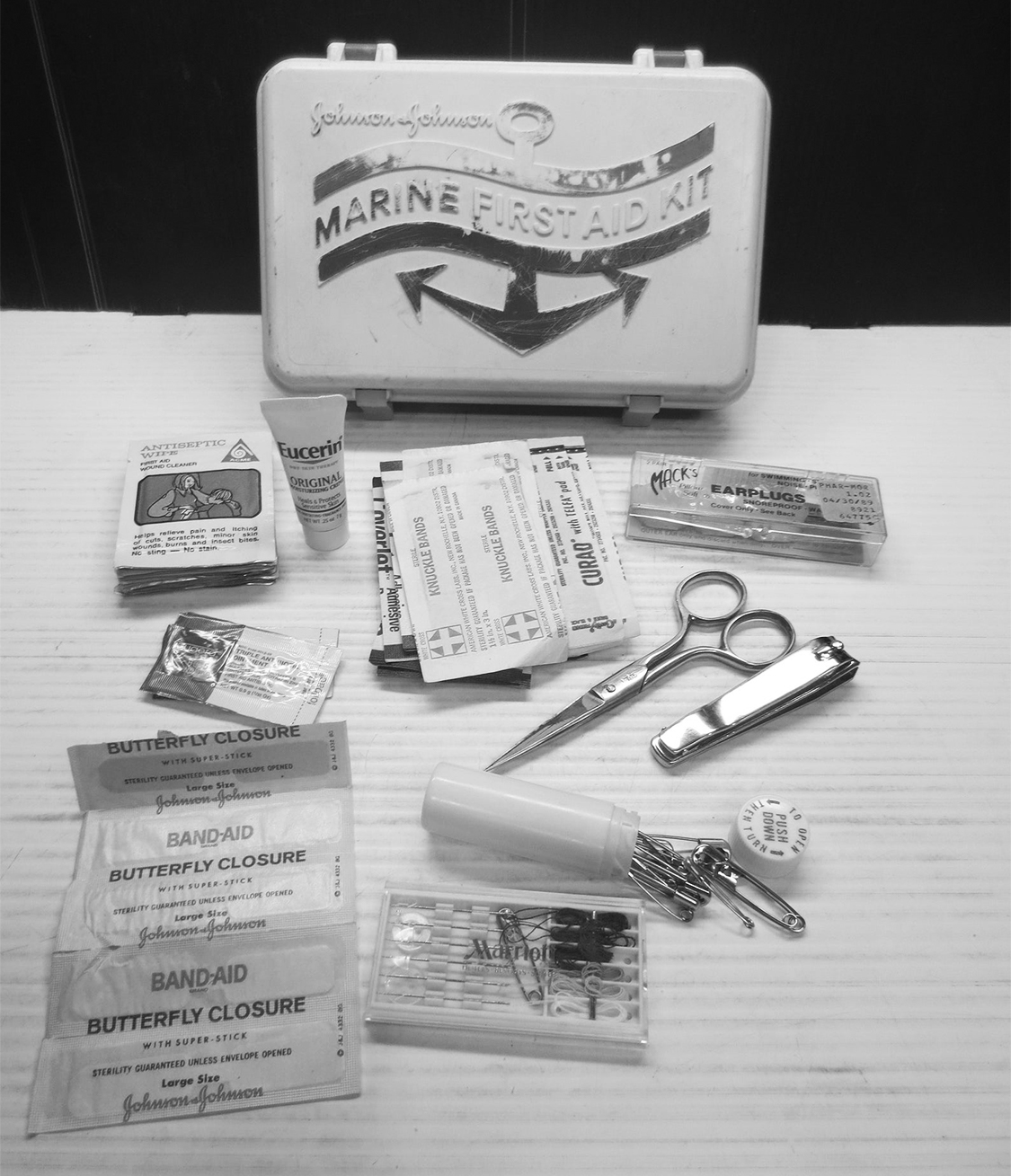
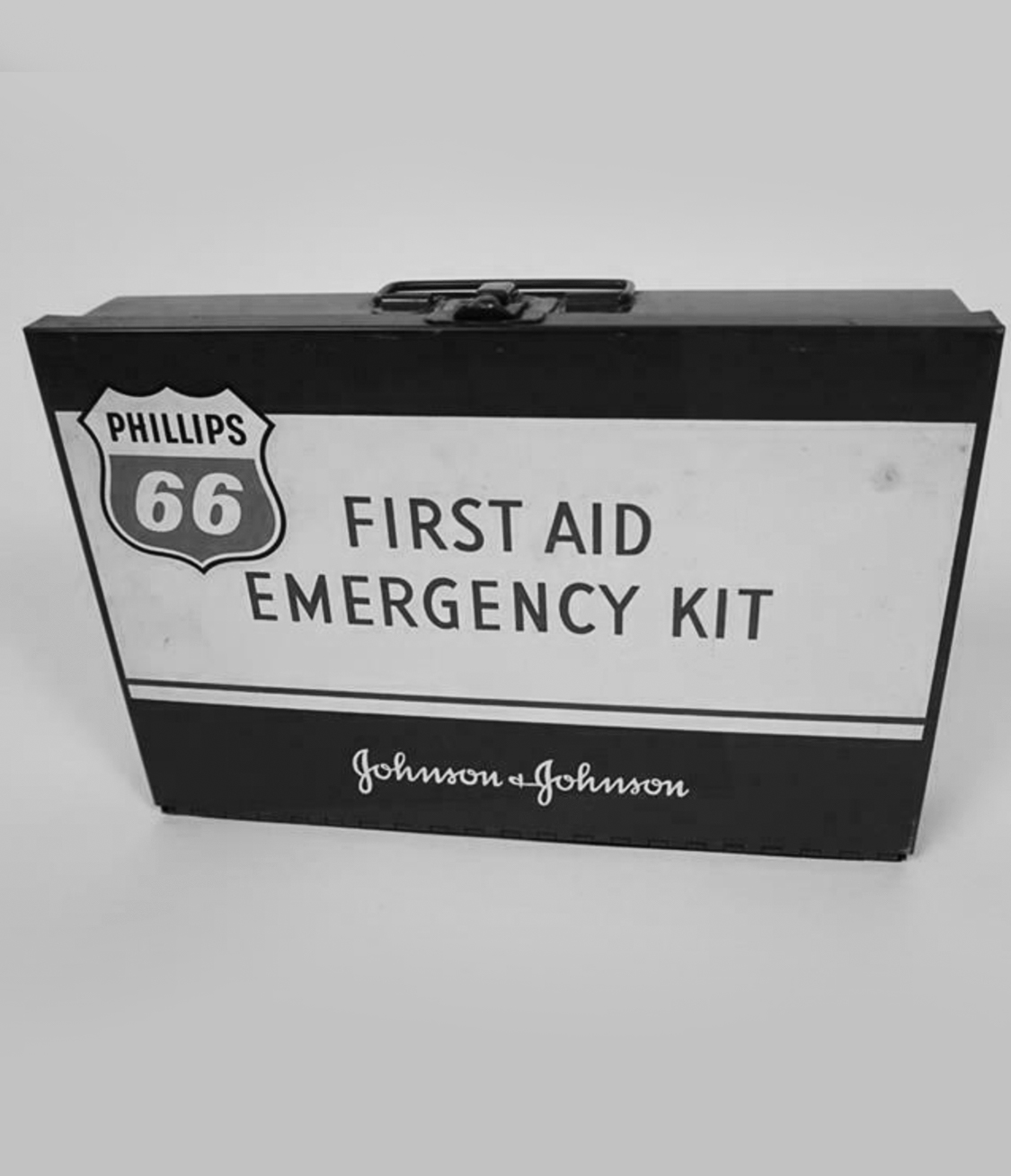
kits from the 1960s
Design and Fabrication
After landing on a concept, I starting thinking about digital design and fabrication. I chose my medical metaphors, sought out inspiration, and started creating digital and physical prototypes.
I designed my labels digitally in Illustrator, created quick prototypes using printer paper and medical bottles. To ensure metaphors translated, I maintained a continuous feedback loop with peers and professors.
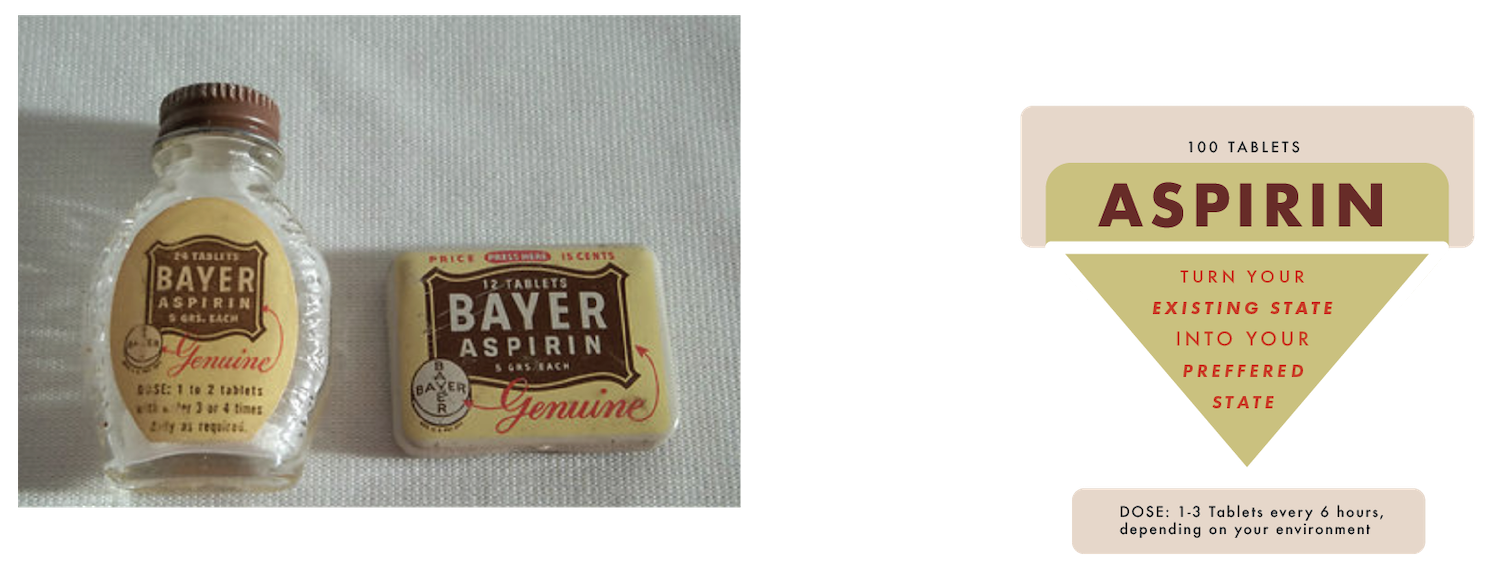
1960s inspiration for herbert simon bottle
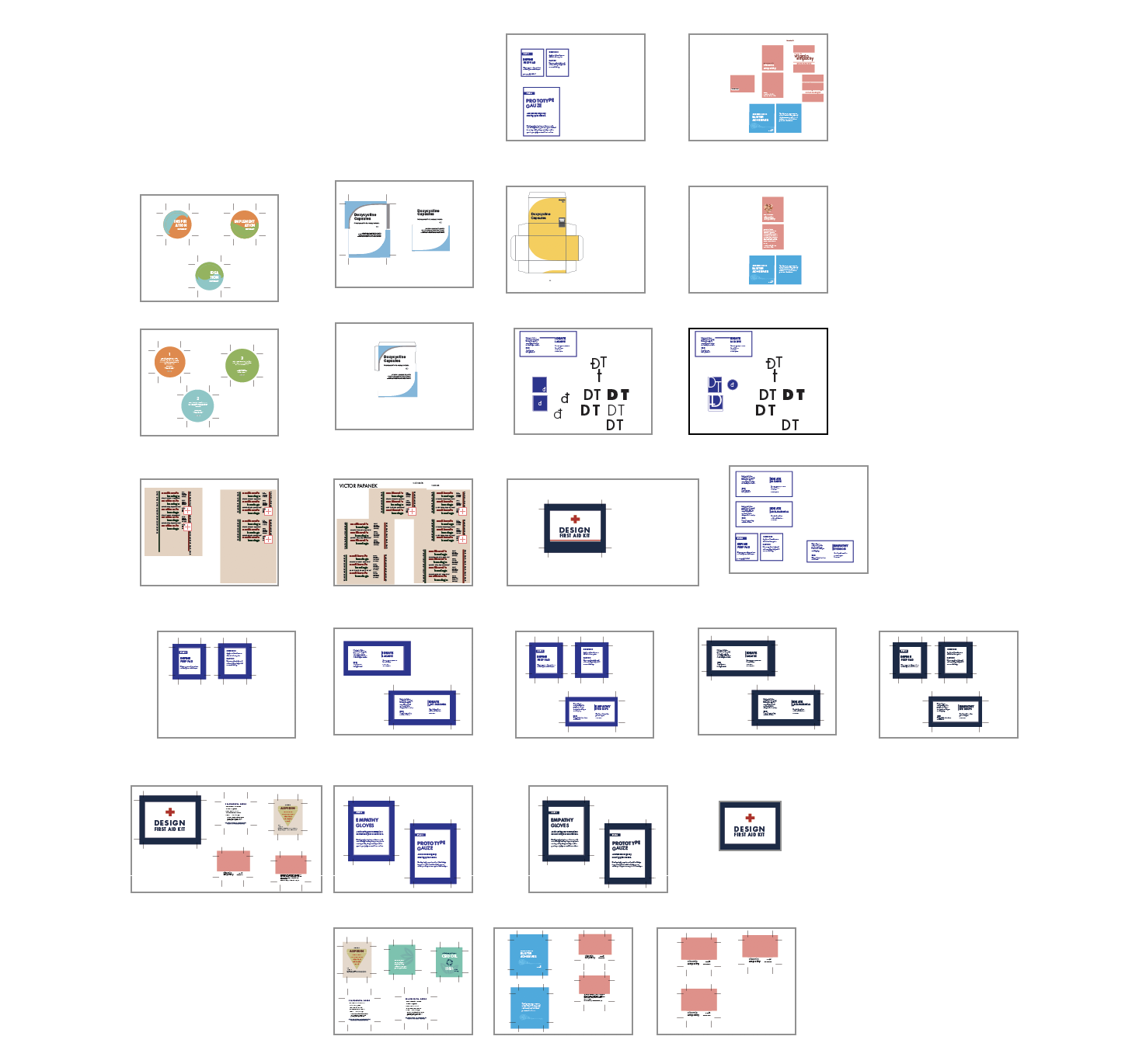
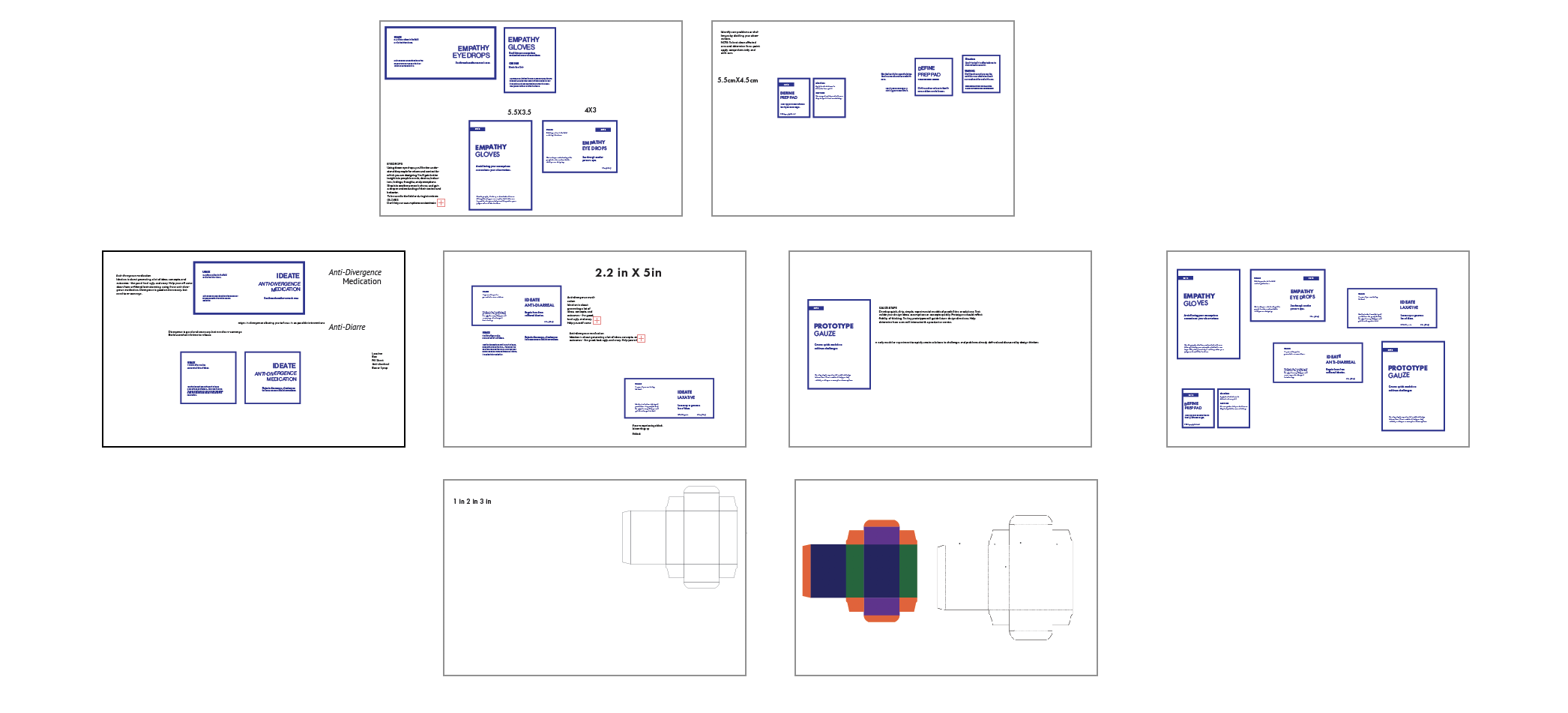
in progress labels and iterations
Materials
I used a number of materials and tools to assemble my kit–sticker paper, velum, laser cutters, and wide-format printers.

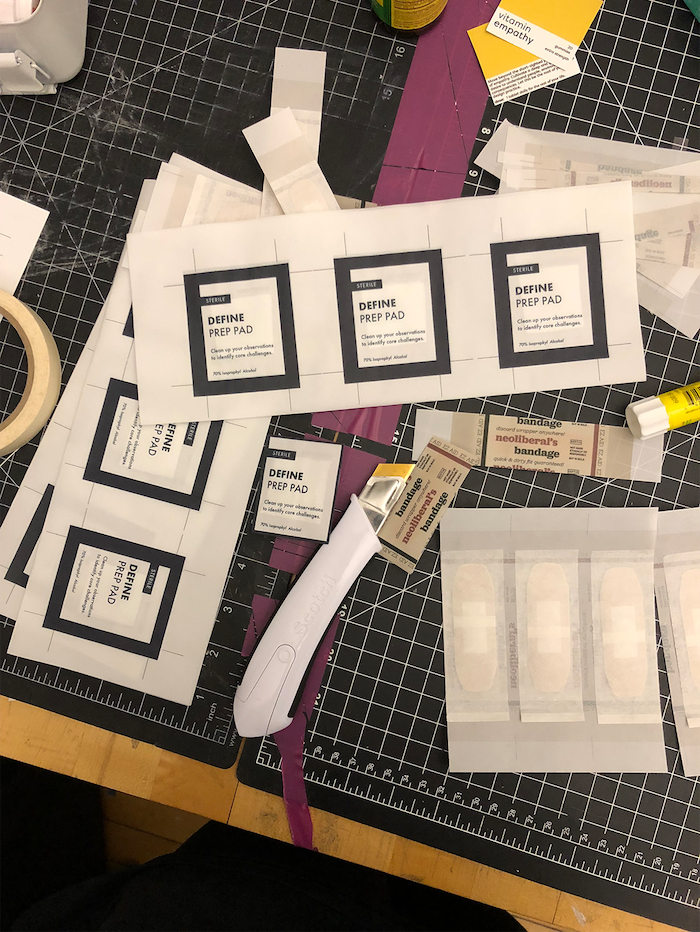

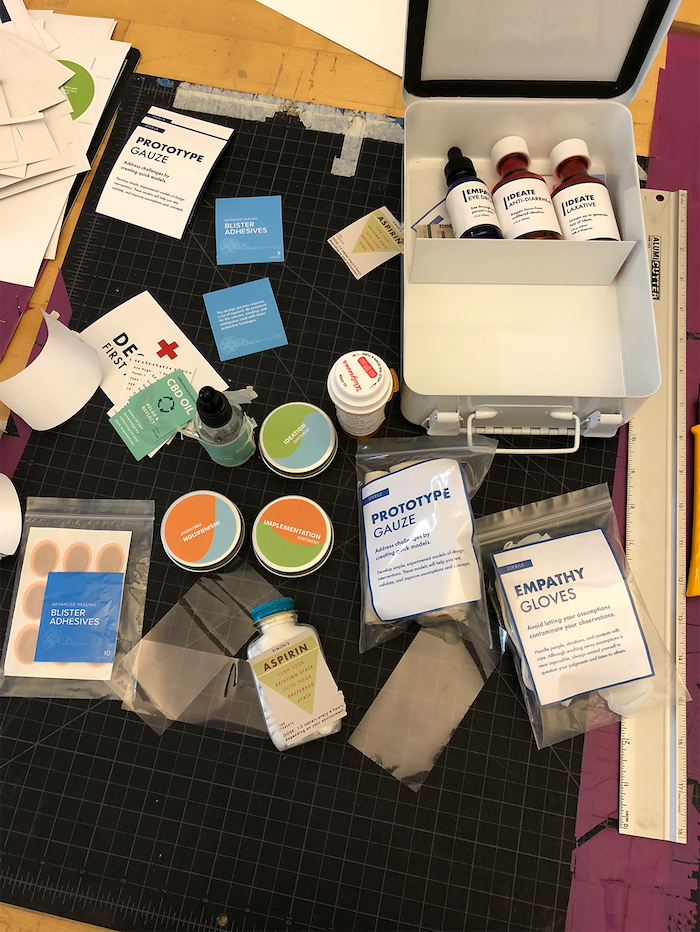
Final Kit
The final kit contains 16 different items, each inspired by a different aspect of the design thinking debate.


Kit In Action

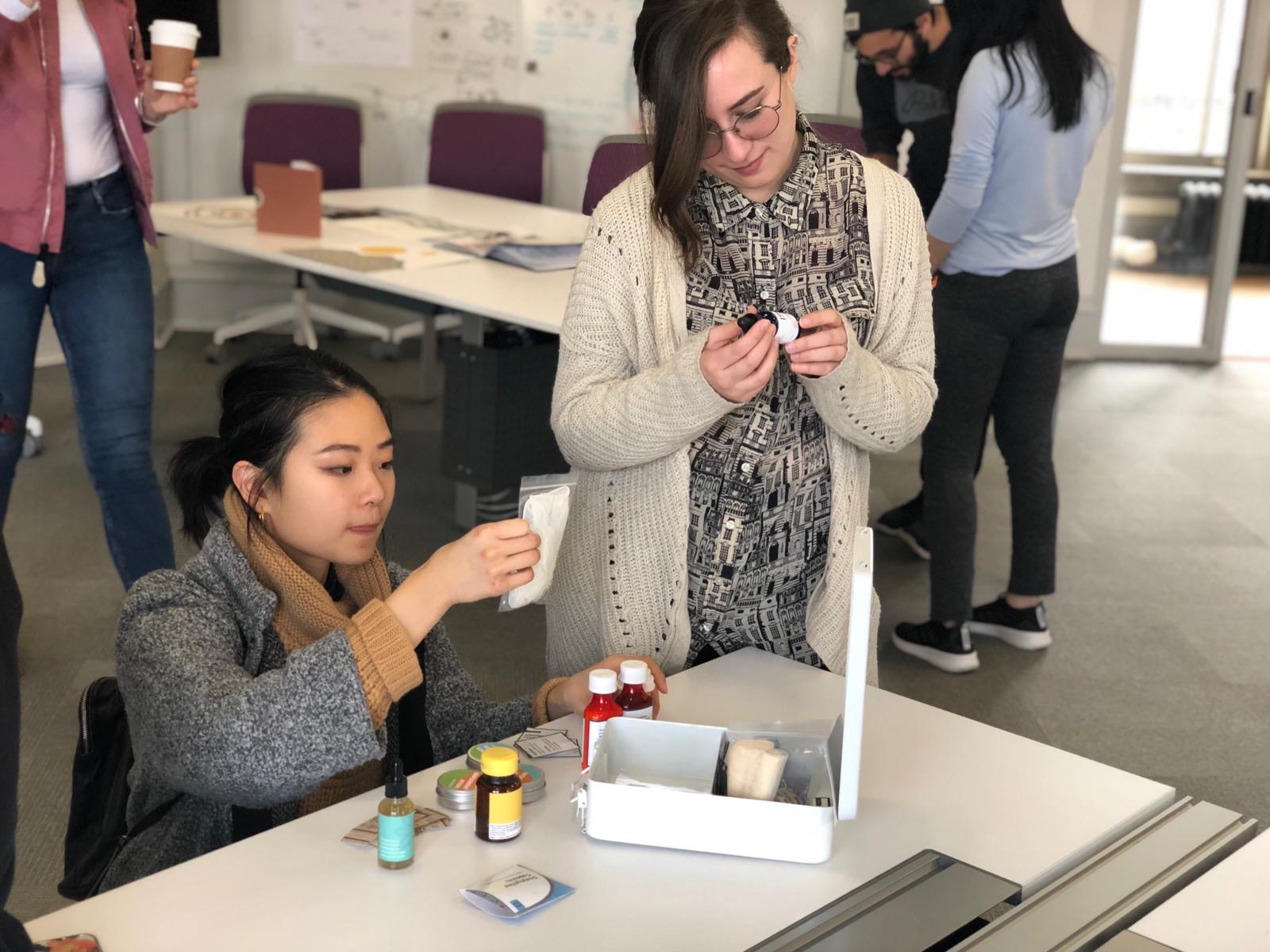
What's Next?
I would love to continue updating this kit by adding in the voices of various influential design thinkers (e.g., Horst Rittel and Donella Meadows). Further, I hope to see how this kit does in the wild.
© 2022 — Amrita Khoshoo